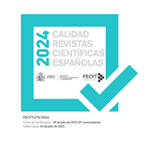El marcador discursivo "dale" desde la perspectiva de la unicidad del signo
Resumen
El sintagma verbal dale, forma imperativa del verbo dar en segunda persona del singular seguida del pronombre enclítico átono de tercera persona le, revela diferentes matices expresivos según el contexto en el que se presenta. Uno de sus efectos de sentido es característico del habla de algunas áreas lingüísticas hispanoamericanas, entre las que se encuentra el español de Argentina y Uruguay, donde se emplea como marcador discursivo conversacional para aceptar una propuesta y cuyas características coinciden con las de ciertos marcadores del discurso. Una gran parte de los estudios acerca de los marcadores consideran que estas herramientas pragmáticas provienen de unidades léxicas plenas que se desemantizan parcial o totalmente y que se fosilizan morfosintácticamente como resultado de un proceso de gramaticalización. Contrariamente a lo que proponen estos trabajos, postulamos que los elementos constitutivos del marcador discursivo dale no están ni degradados nocionalmente fosilizados morfosintácticamente. Procederemos a un análisis semasiológico de la unidad dale desde la perspectiva de la unicidad del signo lingüístico, según la cual, gracias al significado único e invariable de los dos elementos constitutivos, la unidad dale le permite al locutor solicitar a su interlocutor la realización de un acto.Descargas
Descarga artículo
Licencia
La revista Círculo de Lingüística Aplicada a la Comunicación, para fomentar el intercambio global del conocimiento, facilita el acceso sin restricciones a sus contenidos desde el momento de su publicación en la presente edición electrónica, y por eso es una revista de acceso abierto. Los originales publicados en esta revista son propiedad de la Universidad Complutense de Madrid y es obligatorio citar su procedencia en cualquier reproducción total o parcial. Todos los contenidos se distribuyen bajo una licencia de uso y distribución Creative Commons Reconocimiento 4.0 (CC BY 4.0). Esta circunstancia ha de hacerse constar expresamente de esta forma cuando sea necesario. Puede consultar la versión informativa y el texto legal de la licencia.











